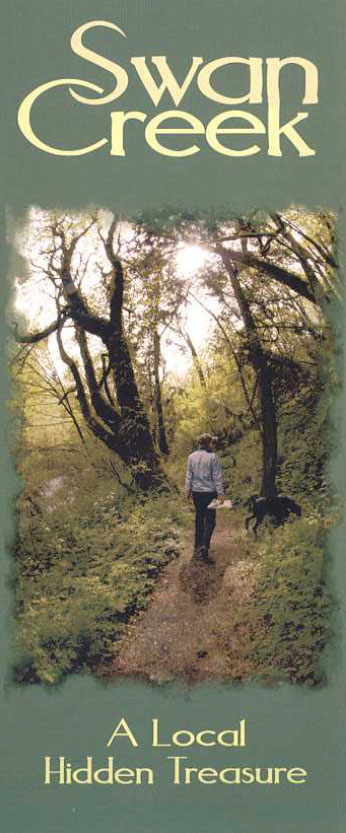Invasive plants will be removed from Swan Creek Park and adjacent Pierce County property over the next few weeks as part of the Washington State Department of Natural Resources’ (DNR) Urban Forestry Restoration Project. A team from Puget Sound Corps began removing non-native invasive plants such as English ivy and Himalayan blackberry Monday.
“Trees play an important role in managing stormwater that impacts the quality of our streams, rivers and Puget Sound,” said DNR special project coordinator Micki McNaughton. “The work by this team to remove invasive plants will help keep our trees healthy, ultimately contributing to healthy waterways in Pierce County, among other benefits.”
The project, administered by the DNR Urban and Community Forest Program, is intended to enhance the urban forest, manage stormwater, and improve air and water quality by improving the health and functionality of trees and forested sites in urban settings. Invasive non-native plants prevent forested areas from providing the community the full benefits and services of healthy forests by competing for water and nutrients, and in some cases even killing trees. Once the unwelcome plants are gone, native vegetation will be planted in some areas.
Swan Creek is one of Pierce County’s focused water quality streams under its Raise the Grade Program. That means additional water quality inspections, invasive weeds removal, and stormwater improvements are currently under way. Since 2008, Pierce County’s Surface Water Management (SWM) division has tracked and reported the water quality of streams and lakes in an annual Surface Water Report Card. Streams and lakes are graded on a scale of ‘F’ (failing) to ‘A’ (excellent). The goal of the “Raise the Grade” project is to improve water quality in streams and lakes with low grades. In 2010, Swan Creek received a “C-” grade. The low grade is due to high levels of fecal coliform, nitrogen and phosphorus, all of which can come from human and animal waste. In addition, Swan Creek is on the Washington State 303(d) list of polluted waters for fecal coliform. The Benthic Index of Biotic Integrity (BIBI) score for Swan Creek is also poor. The BIBI score is based on the type and amount of bugs that live on the bottom of the stream. The type and amount of bugs can tell a lot about the health of a stream. In 2012, Swan Creek was selected in the Puyallup River watershed. A project team assigned to identify problems, partners, and solutions to water quality in Swan Creek. A project team identified the following actions for 2012 and 2013: meet with community members to find out their ideas on what is contributing to the water quality problems; support ongoing stewardship efforts in the watershed; increase water quality monitoring to identify potential pollution sources; plant trees and shrubs along the creek with the help of landowners; identify problems with septic systems; increase education and outreach to residents; and work with residents and business owners.
More information about Swan Creek Park is available online at metroparkstacoma.org/swan-creek-park. More information about Pierce County’s Raise the Grade Program is available online at piercecountywa.org/raisethegrade.







